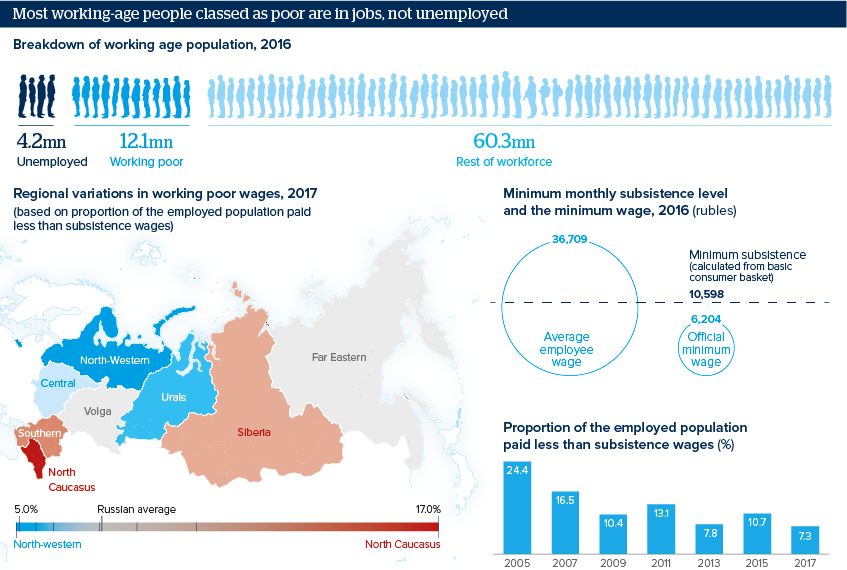Russia’s high employment masks widespread poverty
The ‘working poor’ are far more common among state employees than in the private sector
Source: Russian Government Analysis Centre; Rosstat; Vedomosti; Ekonomicheskie Izvestia
Outlook
Recorded unemployment is low at 4.2% in 2016, falling to 3.8% in the third quarter of 2017. However, a large proportion of people in work are earning less than the official minimum wage.
The government’s Analysis Centre calls them the “working poor” and estimates that they accounted for 16.8% of people in employment last year, much higher than the figure usually cited for workers on very low incomes. The proportion of public-sector working poor is four times as high as in the private sector, and the gap is widening.
The Analysis Centre argues that a resurgent private sector will reduce working poor numbers overall but things may get worse in the state sector.
Impacts
- President Vladimir Putin will worry about voter apathy among lower-income public-sector workers ahead of the March 2018 election.
- By all measures, the working poor category has declined over the last decade and this should continue as GDP growth revives.
- Employers, especially in the public sector, are reluctant to dismiss employees and may instead reduce wages or hours.
- The monthly minimum wage will rise by 21.7% to 9,489 rubles (160 dollars) in January but this is still below the minimum subsistence level.
See also
- Russian policy toolkit mixes rate rises and price caps - Jul 20, 2021
- Lack of people may be Russia's greatest challenge - May 31, 2018
- Putin sets impossible targets for Russian growth - May 25, 2018
- Islamic State on the wane in Russian North Caucasus - Feb 2, 2018
- Falling incomes will deter Russia from reforms - Jan 26, 2018
- Labour force size will constrain Russian productivity - May 11, 2017
- More graphic analysis
